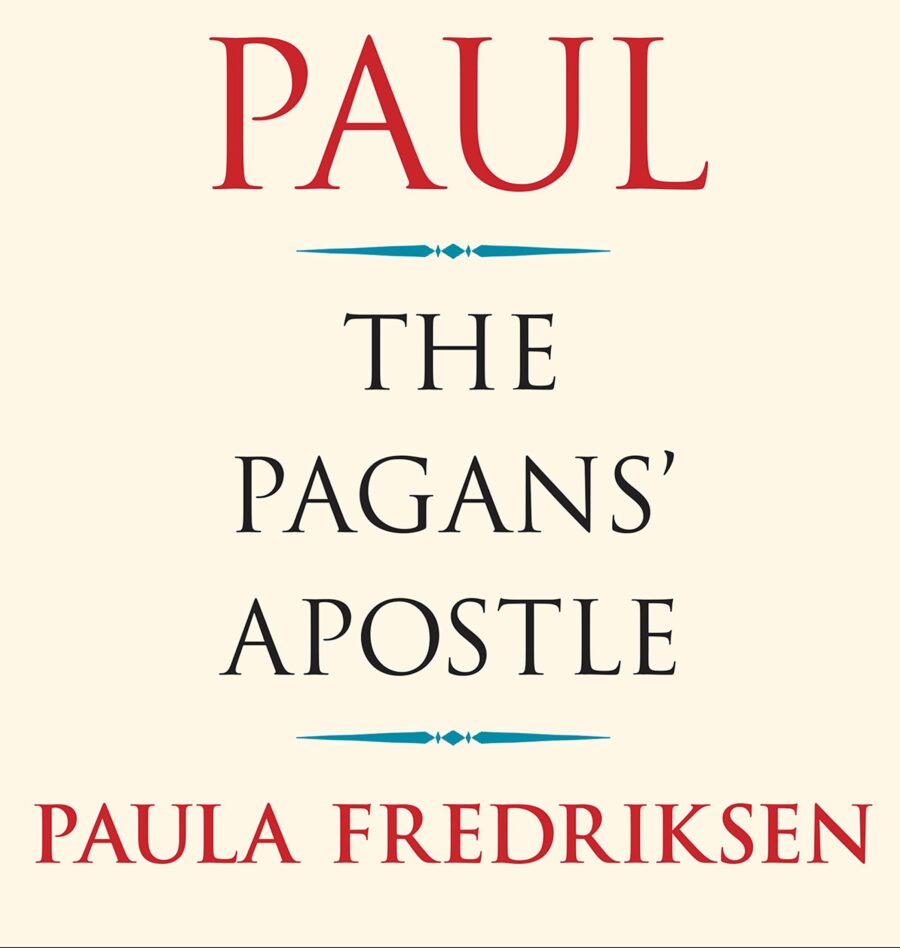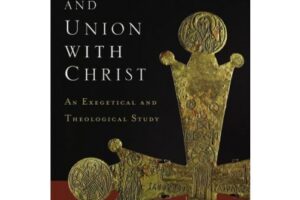FREDRIKSEN, Paula. Paul: The Pagan’s Apostle. Yale: Yale University Press, 2017. pp. 336. $44.27 (Hardcover). ISBN: 978-0300225884.
“Something is going on in Pauline studies.”
So writes Paula Fredriksen in the closing pages of her recently published Paul: The Pagan’s Apostle. By “something” (italics hers), she refers predominantly to the emerging “Paul Within Judaism” school that renders “another Paul” in contrast to the well-rehearsed portraits of what she calls the “majoritarian Paul”—the Paul that became the “First Christian Theologian” who broke ties from the moorings of Judaism to found the Christian religion. In demonstrating the burgeoning promise of this movement, she cites the recent studies by Stanley Stowers, John Gager, Pamela Eisenbaum, Caroline Johnson Hodge, Mark Nanos, and Matthew Thiessen (among others).
This is not to suggest that Fredriksen’s book serves as a manifesto representing the claims and features of this particular movement (whose contributors operate within a significant margin of diversity). While her own sketch of Paul certainly fits within the central aims and objectives of this group, Fredriksen offers her own distinctive rendering with her own particular accents and perspectives, bringing to a culmination the arguments of her many essays and prior publications concerning Paul.
As such, many of the core arguments in Paul: The Pagan’s Apostle will not be entirely new to readers familiar with Fredriksen’s work. The primary features shaping her portrait of Paul are summarized briefly below.
1. Paul as a Man Running Out of Time:
For Fredriksen, the central feature that “shaped everything that Paul says and does” was his belief that he lived within history’s final hour. Brimming with apocalyptic intensity, Paul is portrayed as one who formed ekklesiai [churches] racing against a clock ticking along the “edge of the End of time” [xii]. Accordingly, Paul’s ministry and letters were not laying down instructions for a legacy of Christendom through the ages. Likewise, he did not have time to provide instructions for children or future generations of believers concerning whom he wrote close to nothing (after all, the world in its present form was passing away, the night was nearly gone, the new day was coming). She asserts, “What we with historical retrospect see as ‘earliest Christianity’ was in its own generation—which Christ-followers were convinced was history’s last generation—a sect of Judaism.” [113]
2. Paul Was and Remains Faithful to Judaism:
Necessary problems of nomenclature and categorizations of ancient “religious” categories to one side, Fredriksen presses for a rendering of Paul as a thoroughly faithful Jew who preached his gospel squarely within the ambit of Judaism and the promises of its Scriptures. Deeply influenced by the Isaianic vision of the nations coming to Jerusalem in the last days (e.g., Isa 66), and confirmed by his vision of Christ and the activity of the Spirit active among the gentiles, Paul operated out of his own prophetic calling from God to become an apostle to the gentiles. For this to work according to the Scriptures, it was necessary for Paul that “gentiles needed to remain gentiles” and “Israel must remain Israel,” distinct and set apart by their covenants and the temple [e.g., 164-65 and passim].
3. By Corollary, For Paul, There was No Christian Supersession of Judaism
Vital to her argument, and developed throughout the book, is the refutation of any indication that Paul advocated a Christian supersession of Judaism in the form of a new, spiritualized, universal and non-ethnic community that fulfills Jewish promises and practices. In line with her prior studies, Fredriksen challenges the view that Judaism operated as a misanthropic,exclusivistic group bent on Pharisaic purity. In support of this, she provides an array of contextual evidence that demonstrates a diaspora Judaism that vibrantly participated in civic and pagan cultic life and promoted a mutuality of “temple tourism.”
It deserves attention that Fredriksen distances herself from certain Sonderweg (two covenant) schemes of Paul (often associated with the Within Judaism school) by her insistence that Paul regarded Jesus as not only the pagan’s Messiah, but Israel’s Messiah as well. In her view, Paul was convinced that Israel could not understand that Christ is Israel’s Messiah but held firm hopes that they would recognize this at the end when the “fullness of the nations” was brought in (Rom 11:25). In continuity with Stendahl and a host of other scholars (she also enlists the support of Schweitzer, and even Augustine and Origen), Paul’s mission to the Gentiles was for the redemption of Israel [251, n.85].
4. The gods Run in the Blood
Fredriksen’s sketch of Paul lays significant store in categories of ethnicity for explaining a great deal of Paul’s life and message. Paul may, Fredriksen grants, speak of a universal scope concerning his gospel message as well as a universal character of “God,” but as she likes to say, “that universality is ethnically inflected” [115]. Similar to what may be found with other gods in antiquity, Israel’s God affirmed a particular people, spoke their language, and became their covenant partner. “Israel’s god,” Fredriksen avers (doubtless with some measure of provocation), “is Jewish.” This is an idea that she is sure to expound upon in her forthcoming monograph entitled, How Jewish is God? Yes, Fredriksen notes (as Paul himself does), that God is a God of the nations [ethnē] also (Rom 3:29), but all of this is in and within the scope of Jewish prophetic expectation.
Concluding Assessment
There are few voices like Fredriksen in biblical studies that combine her level of clarity, learning, and insight, all the while providing responsible counterweight to the more ideologically-entrenched stances on the Apostle Paul. What emerges from her full-length study is a readable, historically responsible, and ultimately cogent portrayal of Paul that earnestly attempts to place Paul in the true-to-life realities of his Greek, Roman, and Jewish contexts instead of a reliance on historical stereotype or later-developed theological tradition.
As will be the case with many other readers, I have my own disagreements with Fredriksen’s rendering of Paul, some more pressing than others. I agree with her that many prevailing studies on Paul fail to sufficiently grapple with Paul’s imminent, apocalyptic horizon that drives so much of his message and pattern of ministry. Furthermore, I agree that the evidence simply does not show that Paul commanded ethnic Jews to stop living in accordance with their laws, customs, and sacred traditions. His prophetic call to go to the nations was clearly in line with, not disjointed from, the line of Israel’s prophets. However, at the heart of the matter, I cannot yet accept her proposal that Paul saw ethnic Israel as assured of their own privileged status in the immediate time after Christ’s resurrection—a status needing no practical change. The so-called “interregnum” between the resurrection of Jesus and his return still appears to call for a significant change for ethnic Jews in their present time — not least, their need to themselves call upon the name of the Lord (Jesus) and themselves to be found also ἐν Χριστῷ [in Christ]. To hold otherwise appears, in my estimation, to downplay incontrovertible evidence that Paul ministered to gentiles who stood in constant solidarity with Jewish believers in Christ (many of whom suffered in ways that Paul’s symbolic collection sought to alleviate), that he called for central appeals of realized unity for peoples across all classifications (not least Jew and Gentile), and that he called for various scruples concerning food and sacred days to be overcome by a Christ-patterned principle of “walking in love”—a pattern that in most honest historical reconstructions must have implicated both god-fearing gentiles and ethnic, Jewish Christ-believers alike. While Paul may indeed have thought he was running out of time when he instructed people of all walks to “remain as they are” (1 Cor 7), there is enough evidence to demonstrate that Paul was deeply concerned about how these people in the meantime (short as it may be) came together as “one body” baptized in “one spirit.” This last point about the spirit is of particular interest to my current research. There has, to this point, been a fairly underdeveloped pneumatology in recent “within Judaism” scholarship that does not account for the role of the πνεῦμα for Israel kata sarka despite the fact that the promised spirit was promised specifically for Israel as much as it was indispensable for gentiles-in-Christ (importantly, Joel 2, Eze 36). Can we speak of “new covenant” (2 Cor 3) and a “new way of the spirit” (Rom 7) for both Jewish and gentile believers in Christ in ways that are at once true to Israel’s prophets, true to Paul, and true to the integrity of Jewish religious and social praxis? Or will such steps in this direction be regarded within this school of thought as ceding too much ground in threatening the integrity of a Paul within Judaism?
Something is indeed going on in Pauline studies. While not fully persuaded, I appreciate many of the corrections offered to the “Christian Paul” by Fredriksen and her colleagues and eagerly await future offers of further response and development. The time is past for simplistic vindications and rehabilitations of long-held portraits of Paul (whether Lutheran, New Perspective, Apocalyptic, or Within Judaism schemes among the many other renderings on offer). Fredriksen’s recent work is a bold and important step in the direction of redrawing the lines (entrenched as some may be) towards something that makes fuller and clearer sense of the evidence, several lines of which have been too-long ignored. Those who seek foremost to understand Paul better in his historical setting are well-served to enter into further dialogue with Fredriksen’s work and strive yet again to reconfigure the pieces until we together arrive at something more historically responsible, less ideologically pre-committed, and in the end, more satisfying of an explanation of the available evidence.





Leave a Reply
Your email is safe with us.